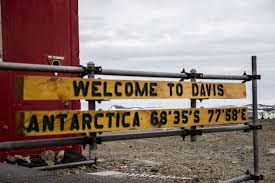 Matthew Gledhill, VK5HZ from a page set at QRZ,com informs that during the Antarctic summer 2018-2019 and Antarctic winter 2019 he will be working at Davis Station (WAP AUS-Ø3) signing VKØHZ.
Matthew Gledhill, VK5HZ from a page set at QRZ,com informs that during the Antarctic summer 2018-2019 and Antarctic winter 2019 he will be working at Davis Station (WAP AUS-Ø3) signing VKØHZ.
Matt will be there 12 months and now says: – Note this is not a DXpedition and any radio activity will be in my downtime. More details of my operation and station setup to come late 2018-.
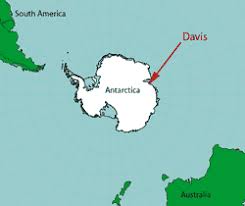 Davis Base is the most southerly Australian Antarctic Station and is situated 2250 nautical miles South-South-West of Perth, on the coast of the ice-free Vestfold Hills, Ingrid Christensen Coast of Princess Elizabeth Land, East Antarctica, in the Australian Antarctic Territory at 68° 34′ 36″ South, 77° 58′ 03″ East, Grid MC81xk
Davis Base is the most southerly Australian Antarctic Station and is situated 2250 nautical miles South-South-West of Perth, on the coast of the ice-free Vestfold Hills, Ingrid Christensen Coast of Princess Elizabeth Land, East Antarctica, in the Australian Antarctic Territory at 68° 34′ 36″ South, 77° 58′ 03″ East, Grid MC81xk
Davis Station officially opened on 14 January 1957; a small ceremony was held to mar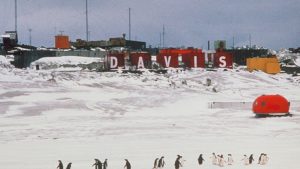 k the event. The Base was named after Antarctic legend, John King Davis, captain of the ships Aurora (1911–14) and Discovery (1929–31). used by Douglas Mawson on his expeditions.
k the event. The Base was named after Antarctic legend, John King Davis, captain of the ships Aurora (1911–14) and Discovery (1929–31). used by Douglas Mawson on his expeditions.
In January 1965, Davis was temporarily closed to concentrate resources on building Casey Station (WAP AUS-Ø2).
Davis was reopened on the 15th February, 1969 and has operated continuously since.
TNX VK5HZ/VKØHZ

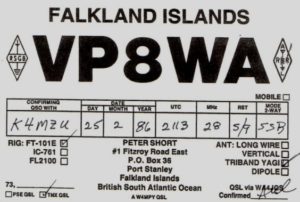 With sincere regret, we learn that Mr. Peter Short VP8WA of Port
With sincere regret, we learn that Mr. Peter Short VP8WA of Port Stanley, Falkland Islands, became a SK 2 weeks ago.
Stanley, Falkland Islands, became a SK 2 weeks ago.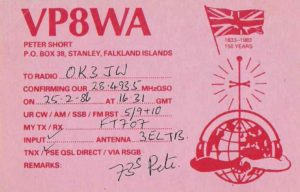 I was the QSL manager for all, but Bob VP8PL and still have the logsfor the following VP8’s: VP8PU, VP8QG, VP8WA, VP8ZV, VP8NJ, VP8QJ and VP8BZL.
I was the QSL manager for all, but Bob VP8PL and still have the logsfor the following VP8’s: VP8PU, VP8QG, VP8WA, VP8ZV, VP8NJ, VP8QJ and VP8BZL.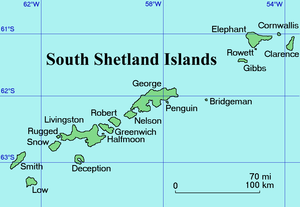 Monday 27 Aug at 20:09:24 a moderate magnitude earthquake at a depth of 64.0 km in open waters did strike the South Shetland Islands, Antarctica. Epicenter latitude/longitude was 61.85° South, 58.5° West
Monday 27 Aug at 20:09:24 a moderate magnitude earthquake at a depth of 64.0 km in open waters did strike the South Shetland Islands, Antarctica. Epicenter latitude/longitude was 61.85° South, 58.5° West The Australian Antarctic Division has paid tribute to a former Chief Scientist, Professor Patrick (Pat) Quilty AM, who died on Sunday (26 August). Professor Quilty led the Division’s science program for more than 18 years from 1980–1999 and published more than 200 scientific papers.
The Australian Antarctic Division has paid tribute to a former Chief Scientist, Professor Patrick (Pat) Quilty AM, who died on Sunday (26 August). Professor Quilty led the Division’s science program for more than 18 years from 1980–1999 and published more than 200 scientific papers.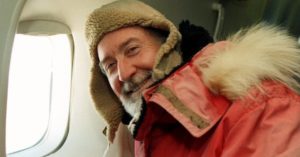
 contribution to Antarctic science.
contribution to Antarctic science. Thanks to our HAM friend Juan Manuel Pereda LU4CJM, this post reflects the worries that rise to world level!
Thanks to our HAM friend Juan Manuel Pereda LU4CJM, this post reflects the worries that rise to world level!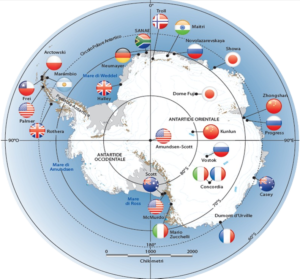 year-long leadership scheme culminating in an Antarctic voyage.
year-long leadership scheme culminating in an Antarctic voyage.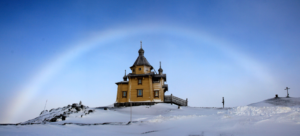 Spring is coming in Antarctica; rainbow above Holy Trinity Church at Bellingshausen Station (WAP RUS-Ø1), King George Island; world’s southernmost Russian Orthodox church.
Spring is coming in Antarctica; rainbow above Holy Trinity Church at Bellingshausen Station (WAP RUS-Ø1), King George Island; world’s southernmost Russian Orthodox church. National Oceanic and Atmospheric Administration scientists have tracked krill populations in the southern oceans for years, but for the first time, they plan to use autonomous computer-driven drones to help with the basic research.
National Oceanic and Atmospheric Administration scientists have tracked krill populations in the southern oceans for years, but for the first time, they plan to use autonomous computer-driven drones to help with the basic research. WAP joins the day of National mourning for the victims of the collapse of the Morandi highway bridge in Genoa.
WAP joins the day of National mourning for the victims of the collapse of the Morandi highway bridge in Genoa.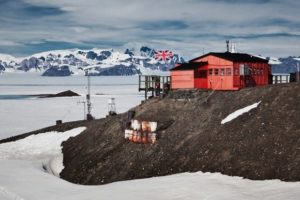 Fossil Bluff lies at the foot of a scree-covered ridge overlooking George VI Sound, which separates mountainous Alexander Island from Palmer Land.This small base located at 71° 20′ South, 68° 17′ West, was established on Alexander Island in 1961 with the purpose of Survey, geology, glaciology and field geophysics. This advanced station, occupied during the winters of 1961, 1962, 1969-75, supplied overland for field parties from Stonington Island (Station E) WAP GBR-Ø5, Adelaide (Station T) WAP GBR-13, and Rothera (Station R) WAP GBR-12. It was closed for the 1976 winter when Rothera (Station R) became fully operational, and now is a forward logistics facility with skiway
Fossil Bluff lies at the foot of a scree-covered ridge overlooking George VI Sound, which separates mountainous Alexander Island from Palmer Land.This small base located at 71° 20′ South, 68° 17′ West, was established on Alexander Island in 1961 with the purpose of Survey, geology, glaciology and field geophysics. This advanced station, occupied during the winters of 1961, 1962, 1969-75, supplied overland for field parties from Stonington Island (Station E) WAP GBR-Ø5, Adelaide (Station T) WAP GBR-13, and Rothera (Station R) WAP GBR-12. It was closed for the 1976 winter when Rothera (Station R) became fully operational, and now is a forward logistics facility with skiway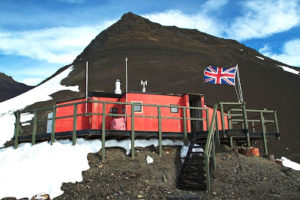 buildings and facilities, at the centre of which lies the main hut, named Bluebell Cottage, houses four people in comfort and forms a transit station for summer field parties
buildings and facilities, at the centre of which lies the main hut, named Bluebell Cottage, houses four people in comfort and forms a transit station for summer field parties The Snipe island 54 ° 57′ South, 67 ° 9′ West was involved into a military incident that took place between Chile and Argentina during 1958 as a result of a disputed border line in the Beagle Channel for the possession of that islet.
The Snipe island 54 ° 57′ South, 67 ° 9′ West was involved into a military incident that took place between Chile and Argentina during 1958 as a result of a disputed border line in the Beagle Channel for the possession of that islet.
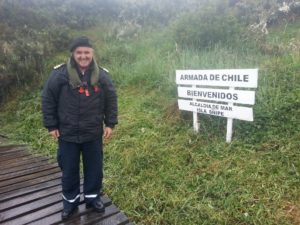 Actually, on this sub-Antarctic site there is a Navy outpost, a Meterological Station and a Lighthouse.
Actually, on this sub-Antarctic site there is a Navy outpost, a Meterological Station and a Lighthouse. The 2018 results of Arctic Challenge , Antarctic Challenge , Polar Challenge ( Arctic Ch + Antarctic Ch ) are available online via :
The 2018 results of Arctic Challenge , Antarctic Challenge , Polar Challenge ( Arctic Ch + Antarctic Ch ) are available online via :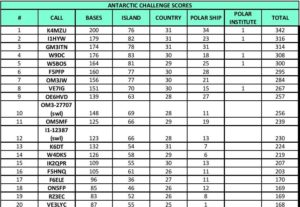
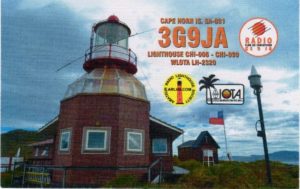 Just to resume the article of last August 1st (the 2016 operation from Hornos Island WAP CHL-2Ø), we are happy to show the QSL of 3G9JA just received by Bob K4MZU, who said: –Good news….very happy today I received QSL confirmation from Dagoberto CE5COX for 3G9JA-.
Just to resume the article of last August 1st (the 2016 operation from Hornos Island WAP CHL-2Ø), we are happy to show the QSL of 3G9JA just received by Bob K4MZU, who said: –Good news….very happy today I received QSL confirmation from Dagoberto CE5COX for 3G9JA-.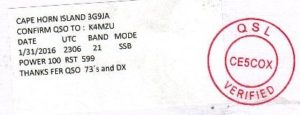
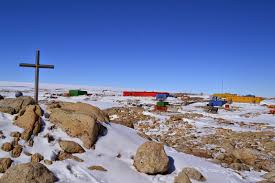 Today on all Australian Stations flags are flying at half mast in honour of Geoffrey Reeve who passed away at Casey in 1979. ( pic aside shows Casey Cross at Reeve’s Hill)
Today on all Australian Stations flags are flying at half mast in honour of Geoffrey Reeve who passed away at Casey in 1979. ( pic aside shows Casey Cross at Reeve’s Hill) Jesuit is the largest single order in the Catholic church, with more than 19,000 members by its own count, and a presence on every continent including Antarctica, where Jesuits have been chaplains and, in keeping with their order’s reputation as the church’s intellectual powerhouse, even scientists. Jesuits have a 60 year history in Antarctica. In 1951 a 27 year-old French Jesuit scholastic (seminarian) and here below are some of them:
Jesuit is the largest single order in the Catholic church, with more than 19,000 members by its own count, and a presence on every continent including Antarctica, where Jesuits have been chaplains and, in keeping with their order’s reputation as the church’s intellectual powerhouse, even scientists. Jesuits have a 60 year history in Antarctica. In 1951 a 27 year-old French Jesuit scholastic (seminarian) and here below are some of them: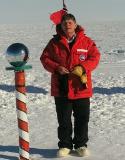 nging students in the classroom, all the while regaling everyone with stories of his adventures—particularly of his trip to Antarctica and his explorations at the bottom of the world
nging students in the classroom, all the while regaling everyone with stories of his adventures—particularly of his trip to Antarctica and his explorations at the bottom of the world Located at 55° 56’ 50” South, 67° 18’ 15” West, Horn Island Meteo Station did enter the WAP-WADA Directory as WAP CHL-2Ø, following the operation of 3G9JA operated in February 2016 (see
Located at 55° 56’ 50” South, 67° 18’ 15” West, Horn Island Meteo Station did enter the WAP-WADA Directory as WAP CHL-2Ø, following the operation of 3G9JA operated in February 2016 (see 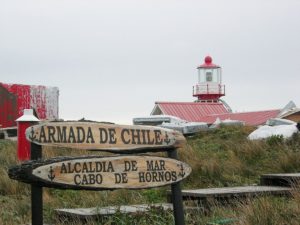 either by land or sea), but on another land point about one mile east-northeast.
either by land or sea), but on another land point about one mile east-northeast.